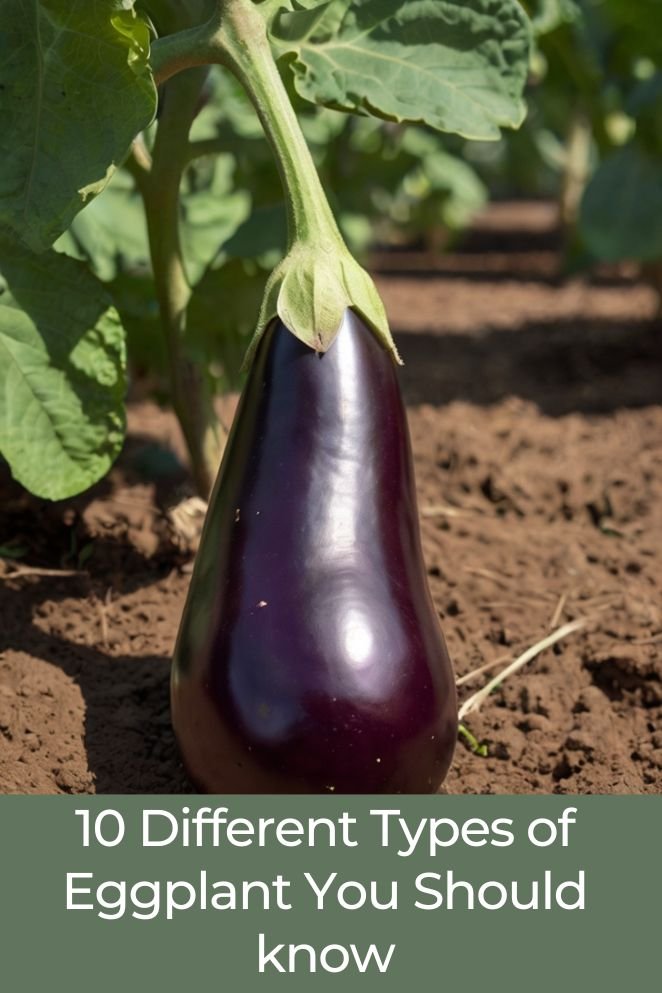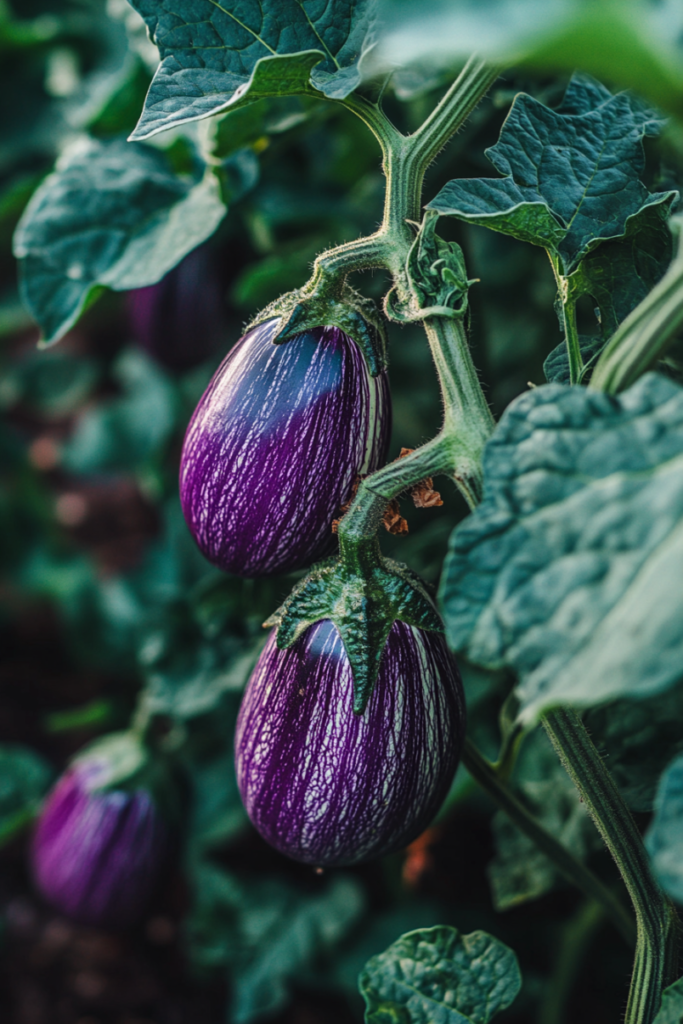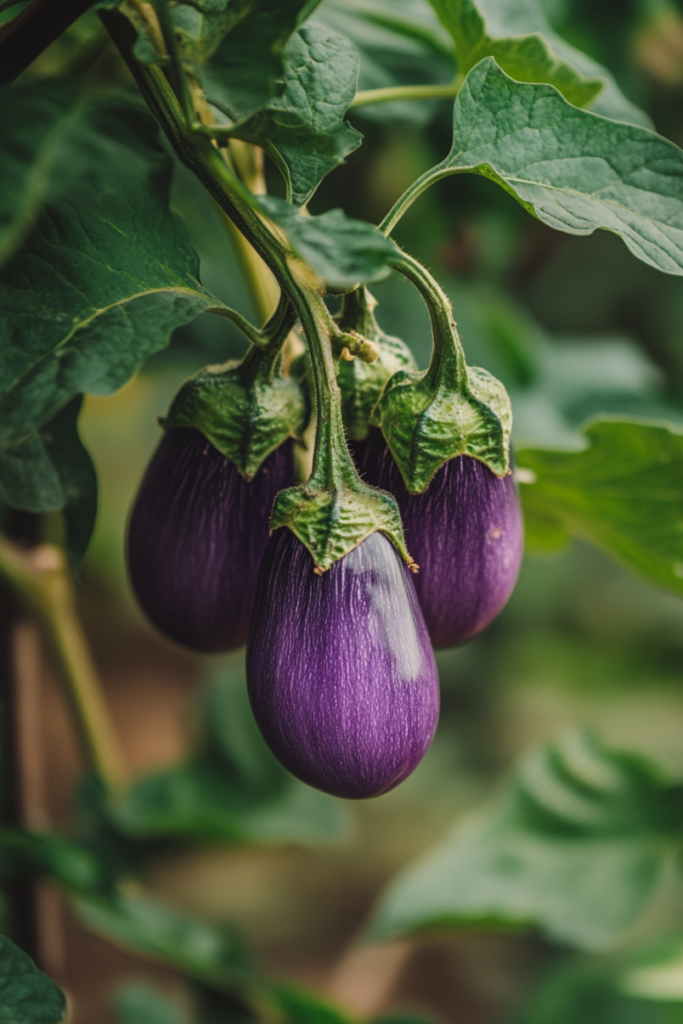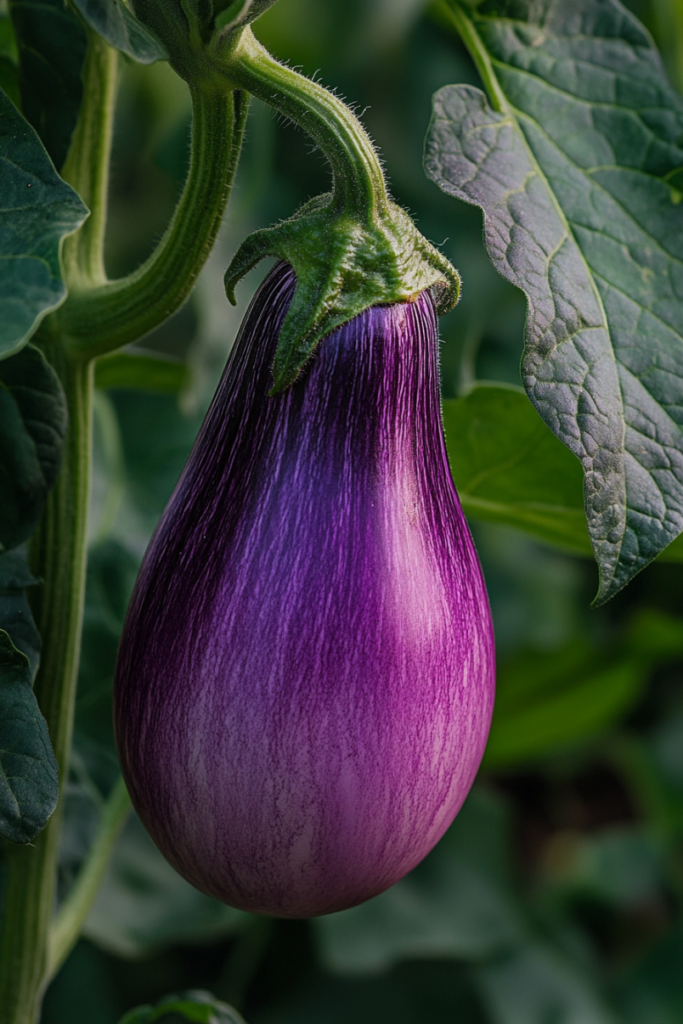
The exact origin of eggplants is still a topic of debate among historians.
However, archaeological findings indicate that eggplants were cultivated in India as early as the 1st century AD.
From there, they spread to different regions, thanks to trade routes and human migration.
Over time, they became widely used in places like the Mediterranean, the Middle East, and across Asia.
Eggplants, also called aubergines in some parts of the world, are incredibly versatile vegetables.
You can grill, bake, roast, or fry them, and they come in a variety of shapes, sizes, and colors.
Not only do they taste great, but their appearance can also add visual interest to many dishes.
Essential Eggplant Nutrition
Before we dive into the types of eggplants, it’s essential to understand their nutritional benefits.
Eggplants are low in calories but packed with essential nutrients.
Here’s a breakdown of what you get when you include eggplants in your diet:
- Low in calories: A cup of raw eggplant contains around 20 calories, making it an excellent choice for those looking to manage their weight.
- Rich in fiber: Eggplants are high in dietary fiber, which aids digestion and helps maintain a healthy gut.
- High in antioxidants: The vibrant purple skin of eggplants contains anthocyanins, powerful antioxidants that help fight free radicals and reduce inflammation.
- Source of vitamins and minerals: Eggplants provide a good amount of vitamins like vitamin C, K, and B6. They are also rich in potassium, magnesium, and folate.
Adding eggplants to your meals is a simple way to boost your intake of nutrients while keeping your calorie count low.
Types of Eggplant
Not all eggplants are the same.
While many people are familiar with the large, dark purple variety commonly found in supermarkets, there are many other types to explore.
Let’s take a closer look at some of the most popular ones.
- Read also: Identifying and Managing Common Eggplant Pest And Diseases
- Read also: Organic Eggplant Care: Growing Healthy, Chemical-Free Eggplants
Globe Eggplant (a.k.a American Eggplant)
This is the most common type of eggplant found in Western supermarkets.
It is large, oval-shaped, and dark purple in color.
Globe eggplants have thick skin and a meaty texture, making them perfect for grilling, roasting, or using in hearty dishes like eggplant parmesan.
Their mild flavor makes them versatile, absorbing the flavors of whatever seasonings or sauces you pair them with.
Italian Eggplant
Italian eggplants are smaller and more rounded than globe eggplants.
They have a deep purple color and a slightly sweeter taste.
Italian eggplants are commonly used in Mediterranean dishes like ratatouille or eggplant caponata.
Their smaller size and tender flesh make them a great choice for dishes where you want the eggplant to cook evenly and quickly.

Japanese Eggplant
Japanese eggplants are long and slender with a dark purple color.
They have thinner skin compared to the globe variety, which makes them cook faster and absorb flavors more quickly.
Their tender flesh and slightly sweet flavor make them ideal for stir-fries, grilling, or roasting.
Because of their size, they’re often used whole or sliced into smaller pieces for dishes that require faster cooking times.
Rosa Bianca Eggplant
The Rosa Bianca Eggplant is an Italian heirloom variety known for its unique characteristics and culinary uses.
The Rosa Bianca eggplant has a round, squat shape with a vibrant lavender or pinkish-purple hue and mottled patterns.
It is often described as having a “Rubenesque” shape, which is plump and visually appealing.
The flesh is creamy and tender, with a mild and sweet flavor that is less bitter than many other eggplant varieties.
They are perfect for stuffing with savory fillings like cooked Italian sausage topped with Pecorino romano cheese.
Indian Eggplant
Indian eggplants, also known as baby eggplants, are small, round, and dark purple.
They have a tender texture and are less bitter than larger varieties.
Indian eggplants are often used in curries, stuffed with spices, or grilled whole.
Their small size makes them perfect for single-serving dishes or for adding a pop of color and flavor to a meal.
Thai Eggplant
Thai eggplants are quite different in appearance from other varieties.
They are small, round, and usually green or pale yellow with a slightly bitter taste.
Thai eggplants are commonly used in Southeast Asian cuisines, particularly in curries and stir-fries.
Their small size allows them to cook quickly and add a unique texture and flavor to dishes.
You may also find these eggplants used in salads or eaten raw in some cultures.

White Eggplant
Yes, eggplants come in white too! White eggplants are similar in size and shape to globe eggplants, but their skin is smooth and pale.
They have a mild, slightly sweeter taste and are less bitter than purple varieties.
White eggplants are great for any recipe that calls for eggplant and can add an interesting visual twist to your dishes.
Chinese Eggplant
Similar to Japanese eggplants, Chinese eggplants are also long and thin, but they are usually lighter in color, ranging from pale purple to white.
They have a delicate flavor and are less bitter than the globe variety.
Chinese eggplants are often used in Asian dishes, such as stir-fries or stews.
Their flesh is creamy and tender, making them a popular choice for braised or sautéed dishes.
Graffiti Eggplant (Striped or Zebra Eggplant)
As the name suggests, graffiti eggplants are known for their unique appearance, with purple and white streaks across their skin.
They are similar in size to globe eggplants but have a more delicate flavor.
Their skin is thin, and they don’t require peeling before cooking.
Graffiti eggplants work well in any recipe that calls for eggplants and are especially good when roasted or grilled.
Fairy Tale Eggplant
These small, slender eggplants are a relatively new variety, characterized by their light purple skin with white stripes.
Fairy tale eggplants are tender and sweet, making them perfect for grilling or roasting.
Their small size makes them ideal for quick-cooking recipes, and they don’t need to be peeled before use.

- Read also: Boost Your Harvest! The Ultimate Guide to Eggplant Fertilizer
- Read also: The Ultimate Guide to Eggplants Spacing in Containers
Conclusion
Eggplants are a diverse and nutritious vegetable that can add flavor, texture, and color to a wide variety of dishes.
Whether you’re grilling a hearty globe eggplant or stir-frying delicate Japanese eggplant, there’s a type of eggplant to suit every cooking style and preference.
Not only do they taste great, but they are also packed with nutrients that support a healthy lifestyle.
Next time you’re at the grocery store or farmers’ market, consider trying a new variety of eggplant and experiment with different ways to cook them.
FAQs
It depends on the type of eggplant. Larger varieties like globe eggplants may have thicker skins that can be tough, so peeling them is recommended. However, smaller varieties like Japanese or graffiti eggplants have thinner skins and can be cooked without peeling.
Salting the eggplant slices before cooking can help reduce bitterness. After salting, let them sit for about 30 minutes, then rinse and dry them before using in your recipe.
Eggplants are best stored in a cool, dry place. If you refrigerate them, keep them in a plastic bag to prevent them from drying out, and try to use them within a few days for the best flavor and texture.
While you can technically eat eggplants raw, they are often quite bitter and tough. Cooking softens their texture and enhances their flavor, making them much more enjoyable to eat.



